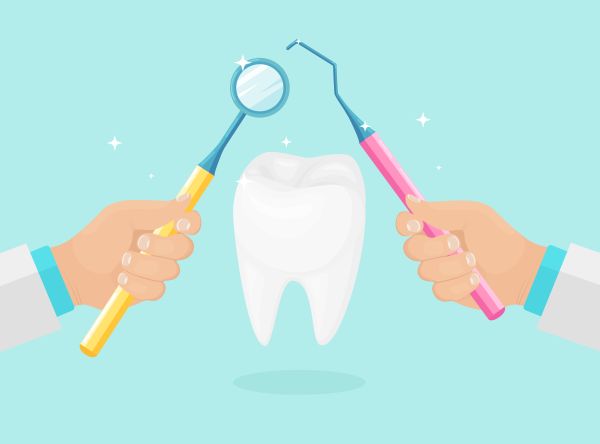An Introduction to Your Tooth Structure

Anatomically, a tooth can be divided into two parts: the root and the crown. Roots are fitted in the jawbone and they are not visible. They help in anchoring the truth to the socket in the bone. The crown part of the tooth that is above the jawline and is usually visible. The part of the mouth where the teeth meet the gums is called the gum line.
Parts of a tooth
A tooth consists of four layers of tissue. The enamel, dentin and cementum are the three hard tissues while pulp is the soft tissue. Here is a description of the various parts of our teeth.
Enamel
The outermost layer of a tooth is known as the hard enamel and it protects the inner layers of the tooth. Enamel does not contain any living cells and it is the hardest substance present in the human body. Despite its hardness, enamel can get damaged if the teeth are not looked after properly.
Dentin
The dentin layer makes up the majority of the tooth. It is softer than enamel and can be damaged if it is exposed.
Pulp
The pulp is the soft tissue that is present in the center of the teeth and contains the nerves and blood vessels. It extends from the root to the crown of the tooth. Nerves do not contribute as much to the health of the teeth but rather they enable us to sense pain.
Cementum
Cementum is present as another hard tissue layer. It covers the root of the tooth and protects it.
Periodontal ligament
The periodontal ligament attaches the teeth to the jawbone. The fibers making up the periodontal ligament attach the cementum to the sockets in the jaw. Teeth feel forces when we chew and the ligament functions as a shock absorber for the teeth.
Gingivae
Gingivae (gums) are the soft tissue present around the teeth and bone. They provide protection to the parts that they surround.
Gingival sulcus
This is the space present between our teeth. About a 1 to 2mm space should be present between healthy teeth.
Bone
The jawbone contains the sockets for the teeth. If a large part of the jawbone is damaged due to disease, then the teeth can become loose.
Types of teeth
Milk teeth and permanent teeth
With the increase in the size of the jaw with age, our milk teeth are replaced by permanent teeth. The latter are the only natural teeth that most of us will have for the rest of life; therefore, it is important to take care of them properly. We lose different milk teeth at different ages during our childhood and teenage years.
There are some differences between milk teeth and permanent teeth. For instance, the former are nearly white in color, while the latter usually have a yellow tinge. Permanent teeth will be larger in size compared to milk teeth. The hard tissue layers of enamel and dentin will also be thicker in the permanent teeth.
Canine teeth
We have a total of four canine teeth. They are present third from the center on both sides of the upper and lower jaw. Canines help us in tearing food.
Molars
Molars are present behind the canine teeth. We have eight molars and eight pre-molars. The wisdom tooth are also molars so counting them makes the total 20. We use our molars to grind food.
Proper maintenance of the teeth is essential for protecting the different layers of our teeth. If you are feeling discomfort or pain in the crown or root of your teeth, get it examined by your dentist for possible causes of the pain.
Request an appointment here: https://www.carolinasmilesdentist.com or call Carolina Smiles Family Dental at (828) 974-3326 for an appointment in our Brevard office.
Check out what others are saying about our services on Yelp: Read our Yelp reviews.


